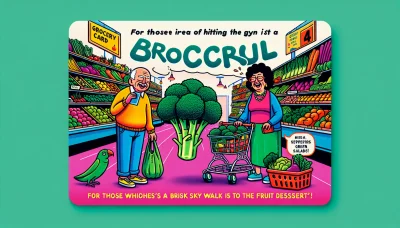What foods are high in insoluble fiber Quiz
Test Your Knowledge
Question of
Understanding Insoluble Fiber
Definition and Health Benefits
What is Insoluble Fiber? Insoluble fiber is a type of dietary fiber that does not dissolve in water. It's found in foods like whole grains, nuts, vegetables, and wheat bran. This powerhouse nutrient remains intact through the digestive system, aiding in the movement and processing of waste.
Role in Digestive Health Insoluble fiber is a champion for your digestive tract! It adds bulk to stool and helps food pass more quickly through the stomach and intestines, reducing the likelihood of constipation. It's like nature's broom, sweeping your digestive system clean!
Chronic Disease Prevention The benefits of insoluble fiber extend beyond digestion. Regular consumption can help lower the risk of developing certain conditions like colorectal cancer, cardiovascular disease, and type 2 diabetes. It's not just about today's health but safeguarding your future wellbeing too!
Daily Recommended Intake
Guidelines for Adults Experts recommend that adults consume between 25 to 30 grams of total fiber per day, with a significant portion coming from insoluble sources. However, most people only get about half that amount, so it's time to up our game and embrace fiber-rich foods!
Adjustments for Age and Gender Fiber needs may vary based on age and gender. Women generally need about 21 to 25 grams per day, while men should aim for 30 to 38 grams. As you age, your requirements might change; staying informed is crucial.
- Eat more whole fruits and vegetables: Skip the peeling; many nutrients are in the skin!
- Incorporate whole grains: Swap white bread or pasta for their whole-grain counterparts.
- Add nuts and seeds: They're not just for birds; they're little nuggets of fiber goodness for us too!
- Beware of processed foods: They often have less fiber than their unprocessed relatives.
- Increase intake gradually: A sudden fiber feast might upset your stomach. Slow and steady wins the race.
- Maintain hydration: Water helps fiber do its job better, so drink up!
Signs of Inadequate Intake If you're not getting enough insoluble fiber, you might experience constipation or irregular bowel movements. Other signs include feeling sluggish or having high cholesterol levels. Listen to your bodyit might be craving more fibrous foods!
Natural Sources of Insoluble Fiber
Whole Grains and Cereals
Whole grains are a powerhouse of nutrition, packed with insoluble fiber that aids in digestive health. They also contain essential vitamins and minerals that contribute to overall well-being. Integrating whole grains into your diet is a smart move for anyone looking to boost their fiber intake.
Cereals can be an excellent start to your day, providing a quick and easy source of insoluble fiber. Many brands are now focusing on whole grain ingredients to cater to health-conscious consumers. Remember to check the labels for added sugars and opt for cereals with natural ingredients.
Types of Whole Grains Rich in Insoluble Fiber
Barley, brown rice, and bulgur are champions when it comes to insoluble fiber content. These grains can be used as bases for a variety of dishes, from hearty soups to refreshing salads. Each serving contributes significantly to your daily fiber needs.
Best Cereal Choices for Fiber Content
When selecting cereals, look for options like bran flakes or oat-based products that prioritize fiber content. Such cereals not only support a healthy gut but also help maintain steady blood sugar levels throughout the morning.
Tips for Incorporating More Whole Grains
- Start by substituting white bread with whole grain alternatives.
- Mix whole grains like quinoa or farro into salads for an extra fiber boost.
- Experiment with ancient grains such as amaranth or teff in your recipes.
- Choose whole grain pasta and brown rice over their refined counterparts.
Nuts and Seeds
Nuts and seeds are not only delicious but also brimming with nutrients including insoluble fiber. They're incredibly versatile, making them an easy addition to any meal or snack. Regular consumption can contribute to heart health and improved digestion.
Variety of Nuts High in Fiber
Almonds, walnuts, and pecans stand out as the nuts with the highest fiber content. They're perfect for snacking or adding crunch to dishes while fueling your body with essential fatty acids alongside the fiber benefits.
Seeds as a Fiber Source
Seeds such as chia, flaxseeds, and pumpkin seeds are tiny titans rich in insoluble fiber. They can be easily sprinkled over yogurt, blended into smoothies, or baked into breads for an effortless nutritional upgrade.
Creative Ways to Add Nuts and Seeds to Your Diet
Incorporating nuts and seeds into your diet can be both fun and creative. Use them as toppings on oatmeal or salads for added texture. Or blend them into homemade nut butters that can be spread on toast or fruit slices for a satisfying snack.
Vegetables High in Insoluble Fiber
Root Vegetables
Root vegetables are a treasure trove of insoluble fiber, essential for digestive health and regularity. Their dense structure holds significant amounts of this crucial dietary component, making them an ideal choice for anyone looking to boost their fiber intake. Including a variety of root vegetables in your diet can have a substantial impact on your overall well-being.
Carrots, turnips, and beets are just the tip of the iceberg when it comes to fiber-packed root vegetables. These underground gems are not only rich in nutrients but also contribute to the feeling of fullness, which can aid in weight management. Don't overlook the humble parsnip or sweet potato; these too are brimming with dietary fiber and flavor.
Examples of Fiber-Rich Root Vegetables
- Carrots: A crunchy powerhouse of fiber.
- Potatoes: With skin on, they're a fiber favorite.
- Sweet Potatoes: A sweeter twist on high-fiber goodness.
- Parsnips: A lesser-known source that's worth your attention.
- Beets: Deeply colored and deeply nutritious.
Preparing Root Vegetables to Maximize Fiber
The preparation of root vegetables is key to preserving their insoluble fiber content. Opt for methods that maintain or enhance their fibrous texture, such as roasting or steaming. Avoid overcooking as it can lead to a loss of valuable nutrients. With the right technique, you can turn these earthy ingredients into a delectable and nutritious part of your diet.
Eating root vegetables with their skins intact is another fantastic way to ensure you're getting the most fiber out of each bite. The skin often contains concentrated amounts of fiber and nutrients. Just make sure to thoroughly wash and scrub the vegetables before cooking to remove any dirt or contaminants from the surface.
Root Vegetable Recipes for Daily Meals
Incorporating root vegetables into daily meals is astonishingly simple yet incredibly effective for upping your insoluble fiber intake. Start with a breakfast hash made from diced sweet potatoes and carrots, transition to a lunchtime beetroot salad, and end with a dinner featuring roasted parsnips alongside your protein of choice. The possibilities are endless!
Leafy Greens
Leafy greens are not only low in calories but also high in vitamins and mineralsand they're an excellent source of insoluble fiber! This type of fiber doesn't dissolve in water, which helps add bulk to stool and prevents constipation. From spinach to kale, incorporating leafy greens into your diet is both beneficial and delicious.
Identifying High-Fiber Leafy Greens
Kale stands out as a superstar among leafy greens due to its impressive insoluble fiber content. Swiss chard, collard greens, and spinach also rank high on the list, offering substantial amounts of this essential nutrient. These leafy powerhouses support healthy digestion and can be easily integrated into countless dishes.
Salad Ideas with Insoluble Fiber
A fresh salad is one of the most direct methods to consume high-fiber leafy greens. Combine crisp romaine with peppery arugula and tender spinach leaves for a textured and nutritious base. Top it off with sliced radishes or chopped broccoli stems for an extra crunch and even more fibrous benefits!
Tips for Enhancing Your Salads:Cooking Techniques for Leafy Greens
To maximize the nutritional value when cooking leafy greens, aim for techniques that retain their fibrous content. Sauting quickly over high heat with minimal oil preserves both texture and nutrients. Alternatively, steaming can soften tougher greens while keeping their fiber intactjust be sure not to overcook them!
Fruits with High Insoluble Fiber Content
Berries and Their Benefits
Berries are a powerhouse of nutrition, packed with vitamins, minerals, and antioxidants. But let's not overlook their fiber content! These tiny fruits are brimming with insoluble fiber which can aid in digestion and maintaining a healthy gut. Including berries in your diet can contribute to your daily fiber intake and support overall health.
Insoluble fiber found in berries is not just good for digestion; it also helps provide a feeling of fullness. This can be incredibly beneficial for those looking to manage their weight. Berries are low in calories yet high in fiber, making them an excellent choice for a satisfying snack or as an addition to meals.
Types of Berries to Include in Your Diet
When we talk about berries, think beyond strawberries and blueberries. There's a whole range of options like raspberries, blackberries, and cranberries, each with its unique flavor and nutritional benefits. Diversifying the types of berries you consume can maximize the health benefits you reap from these fibrous fruits.
Fresh vs. Frozen Berries: Fiber Content Comparison
Fresh berries are fantastic, but don't discount frozen ones! The freezing process retains the fiber content of berries, making them equally beneficial for your digestive system. In fact, frozen berries can be more convenient and often more affordable, ensuring you have these fibrous fruits on hand year-round.
Berry-Based Snacks for a Fiber Boost
Looking for a quick fiber fix? Whip up a berry smoothie or top off your yogurt with a berry mix. Not only will these snacks satisfy your sweet tooth, but they'll also provide an essential boost of insoluble fiber. It's an indulgence you can feel good about!
Skin-On Fruits
Fruits eaten with their skin are a fantastic source of insoluble fiber. The skin contains the majority of the fruit's fiber content, so eating apples, pears, or peaches without peeling maximizes the benefits. Consuming skin-on fruits is an easy way to increase your daily intake of this crucial nutrient.
Fruits to Eat with the Skin On
- *Apples *Pears *Peaches *Plums *Grapes *Cherries
The Importance of Organic Choices for Skin-On Fruits
When opting for skin-on fruits, consider going organic to reduce exposure to pesticides. Organic fruits are grown without synthetic pesticides or fertilizers, ensuring that you're ingesting fewer chemicals along with your fiber. This choice can enhance the health benefits of consuming skin-on fruits.
Creative Ways to Enjoy Skin-On Fruits
Get creative in the kitchen by incorporating skin-on fruits into various dishes. Chop them into salads for added texture or bake them into healthy desserts. Even grilling fruits like peaches or plums can intensify their flavors while retaining all that valuable fiber content in their skins.
Legumes and Beans as Fiber Powerhouses
Types of Legumes Rich in Insoluble Fiber
Legumes are a fantastic source of insoluble fiber, which is essential for healthy digestion. Lentils, chickpeas, and kidney beans lead the pack, providing not only fiber but also proteins, vitamins, and minerals. Including a variety of legumes in your diet can significantly boost your nutrient intake.
Black beans, navy beans, and peas are other examples that are loaded with this crucial dietary component. These legumes help in preventing digestive disorders and can aid in lowering cholesterol levels. Their high fiber content makes them an excellent choice for anyone looking to improve their gastrointestinal health.
Common Legumes and Their Fiber Content
Let's talk numbers! Chickpeas boast about 12.5 grams of fiber per cup, while lentils provide an impressive 15.6 grams. Black beans come in at around 15 grams per cup. These figures show why legumes are such powerful allies in the fight for a fiber-rich diet.
Notably, white beans contain about 18.6 grams of fiber per cup, making them one of the best sources available. By incorporating these into your meals, you're setting the stage for a healthier digestive system and overall well-being.
Soaking and Cooking Legumes for Optimal Nutrition
To maximize the nutritional benefits of legumes, proper preparation is key. Soaking them overnight can reduce cooking time and improve digestibility. It also helps in reducing phytic acid, which can bind minerals and reduce their absorption.
Cooking legumes until they are tender ensures that they provide the maximum amount of nutrients available. Remember to discard the soaking water and use fresh water for cooking to help minimize any discomfort that sometimes accompanies high-fiber foods.
Legume-Incorporated Recipes for Daily Meals
- Lentil Soup: A hearty blend of lentils with vegetables makes an excellent source of fiber and protein.
- Chickpea Salad: Toss chickpeas with your favorite greens and a zesty dressing for a quick fiber boost.
- Bean Tacos: Fill whole-grain tacos with black beans, salsa, avocado, and cheese for a delicious meal.
- Hummus: Blend cooked chickpeas with tahini, lemon juice, and garlic for a tasty spread rich in fiber.
The Role of Beans in a High-Fiber Diet
Incorporating beans into your diet is one of the most effective ways to increase your daily fiber intake. They're not only packed with fiber but also serve as an excellent plant-based protein source. This combination helps keep you full longer and can contribute to weight management.
Eating a variety of beans is crucial because each type offers different nutrients and health benefits. From controlling blood sugar levels to reducing the risk of chronic diseases, beans have proven time and again to be an essential part of a balanced diet.
Variety of Beans to Choose From
The world of beans is vast! Pinto beans, black-eyed peas, garbanzo beans (chickpeas), and more offer unique flavors and textures to explore in your cooking adventures. Each type brings something special to the tablenutrient-wise and taste-wise!
Diversifying your bean intake not only enhances your meals but also ensures a broader range of nutrients. This is vital for maintaining overall health and ensuring that you get all the essential fibers your body needs from natural sources.
Benefits of Adding Beans to Your Diet
Beyond fiber content, beans have multiple health benefitsthey're low in fat, high in antioxidants, minerals like iron and potassium, B-vitamins, protein without cholesterol or saturated fat found in animal proteins. They're truly nutritional powerhouses!
Their versatility makes them easy to include in any mealfrom breakfast burritos with black beans to dinner chili dishes or even desserts like bean-based brownies! The possibilities are endless when it comes to incorporating these nutritious gems into your diet.
Simple Bean Dishes for Any Occasion
You don't need complex recipes to enjoy the benefits of beanssimple dishes often do the trick! A basic bean salad with olive oil dressing or a comforting bowl of bean stew can provide you with all the goodness these legumes offer while satisfying your taste buds.
Even tossing some canned beans into pasta sauces or rice dishes can make a significant difference in boosting your daily fiber intake. Quick tip: always rinse canned beans to reduce sodium content before adding them to your meals!
Incorporating Insoluble Fiber into Your Diet
Breakfast Ideas to Start Your Day Right
Jumpstart your morning with a fiber-rich breakfast that keeps you full and energized. Insoluble fiber, found in whole grains, nuts, and vegetables, aids digestion and prevents constipation. It's the unsung hero of a hearty breakfast, setting the tone for a day of healthy eating.
Remember, breakfast is a crucial meal that sets up your dietary pattern for the day. Including insoluble fiber early on ensures you're on track to meet your daily fiber goals. Plus, it helps curb mid-morning cravings by providing a sustained release of energy.
High-Fiber Breakfast Recipes
Create delicious morning meals with recipes that pack a punch of insoluble fiber. Think bran muffins bursting with nuts and seeds or savory quinoa bowls topped with fresh veggies. These options don't just tantalize your taste buds; they offer substantial health benefits.
Try whipping up oatmeal pancakes or a barley porridge. These grains are not only versatile but also rich in that much-needed fiber. Pair them with fruit for an extra nutrient kick!
Quick and Easy High-Fiber Breakfast Options
We understand mornings can be hectic! Opt for quick fixes like high-fiber cereals or whole grain toast with avocado. They're simple, no-fuss options that still deliver on the fiber front.
For those on-the-go, grab a fiber bar or make ahead some overnight oats. These convenient choices save time without skimping on nutrition.
Making Breakfast Smoothies with Insoluble Fiber
Blend up a storm with smoothies that sneak in insoluble fiber! Use ingredients like kale, spinach, or carrots. They mix seamlessly into any fruit blend for a deliciously smooth start to your day.
Pack in more fiber by adding chia seeds, flaxseeds, or wheat germ to your smoothie concoctions. Not only do they thicken your drink to perfection, but they also up the fiber content significantly.
Lunch and Dinner Solutions
High-Fiber Lunches for Work or School
- Pack whole-grain wraps filled with beans and crunchy vegetables for a portable and satisfying midday meal.
- Make lentil salads in advance; they are perfect for meal-prepping and high in fiber.
- Incorporate roasted chickpeas or sunflower seeds into salads for an added crunch and fiber boost.
- Choose brown rice sushi rolls over white rice options to increase your intake of insoluble fiber effortlessly.
- Always have cut-up raw veggies like bell peppers or broccoli at hand to dip into hummus for a quick snack.
Satisfying Dinners Packed with Insoluble Fiber
Dinners can be both indulgent and rich in insoluble fiber. Think baked sweet potatoes as sides or entrees like bean chili that warm the soul while providing essential nutrients.
Incorporate whole grains like farro or bulgur wheat into your dinner recipes. They add texture and are phenomenal carriers for flavors from herbs and spices.
Meal Prepping with High-Fiber Foods
Meal prepping is not just about convenience; it's about ensuring you get enough fiber every day. Prepare batches of high-fiber grains like barley or quinoa at the start of the week to mix into various meals easily.
Cook once, eat all week! Stews loaded with vegetables, legumes, and whole grains are perfect for reheating on busy nights, making sure you always have something nutritious at hand.
Understanding the Impact of Insoluble Fiber on Digestion
Insoluble fiber is a type of dietary fiber essential for digestive health, playing a significant role in maintaining regular bowel movements. Unlike soluble fiber, it does not dissolve in water and adds bulk to the stool, which helps to prevent constipation. Its presence in the diet can be crucial for people who struggle with irregularity.
The consumption of insoluble fiber has been linked to reduced risk of developing certain conditions like diverticular disease and hemorrhoids. This is due to its ability to speed up the passage of food through the digestive system, reducing the time that wastes stay in the colon. By incorporating foods rich in insoluble fiber, individuals can promote a healthier digestive tract.
How Insoluble Fiber Affects Gut Health
Insoluble fiber is a powerhouse when it comes to supporting gut health. Its primary function is to provide bulk to feces, which facilitates quicker elimination and prevents the build-up of waste materials in the colon. This action is crucial for preventing complications such as intestinal blockages.
Regular intake of insoluble fiber also helps to maintain a healthy pH balance within the intestines. A balanced pH can prevent microbes from producing substances that might lead to colorectal cancer. Hence, insoluble fiber acts as an essential component for long-term gut health.
The Role of Insoluble Fiber in Bowel Movements
The role of insoluble fiber in promoting regular bowel movements cannot be overstated. It adds volume to stools, making them softer and easier to pass. This reduces strain during defecation and supports overall colorectal health.
For individuals dealing with irregular bowel movements or constipation, increasing dietary insoluble fiber can offer significant relief. Foods like wheat bran, vegetables, and whole grains are rich sources that can help normalize stool frequency and consistency.
Prebiotic Effects of Insoluble Fiber on Gut Flora
Although insoluble fiber is less fermentable than soluble fiber, it still plays a vital part in nurturing beneficial gut bacteria. These prebiotic effects contribute to a flourishing microbiome which is essential for immune function and nutrient absorption.
By maintaining an environment conducive to healthy bacteria growth, insoluble fiber indirectly supports gut flora balance. This balance is key for overall health and well-being, making insoluble fiber an important dietary component.
Managing Digestive Disorders with Dietary Fiber
Dietary fibers, including insoluble varieties, are often recommended for managing various digestive disorders such as Irritable Bowel Syndrome (IBS) or inflammatory bowel disease (IBD). They help manage symptoms by regulating bowel habits.
However, it's crucial to tailor fiber intake based on individual tolerance levels and specific health conditions. Consulting with healthcare professionals before making significant changes in dietary fiber intake ensures that these changes benefit digestive health without causing adverse effects.
Balancing Soluble and Insoluble Fiber Intake
The Difference Between Soluble and Insoluble Fiber
Soluble fiber dissolves in water forming a gel-like substance that can help lower glucose levels as well as blood cholesterol. Found in oats, peas, beans, apples, citrus fruits, carrots, barley and psyllium soluble fiber is known for its ability to moderate blood glucose levels and lower cholesterol.
In contrast, insoluble fibers are found in foods like wheat bran, vegetables, and whole grains; they add bulk to the stool and appear to help food pass more quickly through the stomach and intestiles.
Finding the Right Balance for Optimal Health
- *Tips for Achieving Balanced Fiber Intake: *Start your day with a high-fiber breakfast cereal look for those that offer at least 5 grams of fiber per serving. *Replace white breads, pastas, rice with whole-grain alternatives. *Snack on raw vegetables instead of chips or crackers not only do they offer more nutrients but also higher amounts of dietary fiber. *Include legumes like lentils or beans into your meals they are packed with both soluble and insoluble fibers. *Fruits are excellent sources of soluble fibers; include apples, bananas or berries into your diet regularly. *For baking recipes that call for flour try using half whole-wheat flour this small change can significantly increase your overall daily intake of dietary fibers. *Stay hydrated! Drinking plenty of water enhances the benefits of high-fiber foods.
Signs You May Need More or Less Insolable Fiber
If you're experiencing frequent constipation or irregular stools - you may need more insoluable fibers in your diet. On the other hand if you're having too loose stools you may need less.
It's also important not only how much but what types - as some people might react differently depending on their own body's needs so it's best consult with healthcare professional before making any major changes.
Special Considerations for High-Fiber Diets
Transitioning to a High-Fiber Diet Safely
Embarking on a high-fiber dietary journey promises numerous health benefits, but it's crucial to start on the right foot! A sudden influx of fiber can be a shock to the system, so easing into it is the way to go. Gradually increase your fiber intake over several weeks, allowing your digestive system to adapt smoothly.
When you're ramping up fiber, variety is your ally. Incorporate an array of high-fiber foods like fruits, vegetables, legumes, and whole grains. This not only prevents boredom but also ensures a broad spectrum of nutrients. Remember, diversifying your fiber sources is just as important as increasing the amount.
Gradually Increasing Fiber Intake to Avoid Discomfort
The key to avoiding discomfort when boosting fiber intake is patience. Start with small incrementsthink adding an extra portion of veggies to your plate or swapping in whole-grain versions of your favorite carbs. Pay attention to how your body responds and adjust accordingly.
The magic word for a high-fiber diet transition is 'gradual.' Your gut needs time to produce more of the good bacteria that help digest fiber. So rather than diving in headfirst, take baby steps towards your fiber goals and listen to what your body tells you along the way.
Recognizing and Managing Side Effects of a Sudden Increase in Fiber
Bloating, gas, or changes in bowel movements can signal that you've hit the fiber accelerator too hard. If these symptoms strike, don't panicconsider it a sign to slow down your fiber ramp-up. Scale back slightly and then continue at a more measured pace.
If side effects persist despite a gradual approach, consult with a healthcare professional. They can help determine if there's an underlying issue at play or provide strategies to mitigate these effects. Remember, everyone's tolerance differs, so personalized advice can be invaluable.
Hydration's Role in a High-Fiber Diet Transition
Here's something you can't ignore: Water is fiber's best friend! As you up your fiber game, make sure you're drinking plenty of fluids. This dynamic duo works together to keep things moving smoothly through your digestive tract.
Lack of adequate hydration can lead to constipation, especially when you're eating more fiber. Aim for clear or pale urine as a sign that you're drinking enough water. It's simple yet effectivekeep that water bottle handy!
High-Fiber Diets for Specific Health Conditions
Tailoring Your Fiber Intake for IBS and Other Digestive Issues
If you're dealing with IBS or similar digestive concerns, tread lightly with fiberit's all about balance. Soluble fiber can be soothing for some people by forming a gel-like substance that slows digestion. However, insoluble fiber may exacerbate symptoms in certain cases.
Work closely with your healthcare provider or dietitian to tailor your diet appropriately. They might recommend starting with soluble-rich foods like oats and berries before introducing insoluble fibers found in whole grains and veggies.
The Role of Insoluble Fiber in Managing Blood Sugar Levels
Insoluble fiber is unsung hero material for blood sugar management! Foods packed with this type of fiber prevent rapid spikes by slowing down carbohydrate absorption into the bloodstream. It's an essential strategy for those managing diabetes or pre-diabetes conditions.
- *Slowly integrate insoluble fibers into meals. *Pair carbohydrates with high-fiber foods for better blood sugar control. *Monitor blood sugar responses as you adjust your diet. *Consult healthcare professionals regularly during dietary changes. *Avoid processed foods which are often low in beneficial fibers. *Exercise alongside dietary changes for optimal blood sugar regulation. *Be consistent with dietary habits to maintain stable blood sugar levels. *Consider using a food diary app to track intake and effects on blood sugar. *Stay informed about new research regarding diet and diabetes management. *Seek support from communities or groups focused on healthy living and diabetes control.
High-Fiber Foods and Heart Health
A heart-healthy diet loves its fiber! Studies show that high-fiber foods can lower bad cholesterol levels (LDL), thus reducing the risk of heart disease. The trick is consistent inclusion of these foods in your mealsnot just an occasional appearance.
To really make an impact on heart health, focus on fibers found in beans, lentils, flaxseeds, oats, and fruits like apples and pears. These aren't just good for your heart; they also add delicious variety to your dietwin-win!












